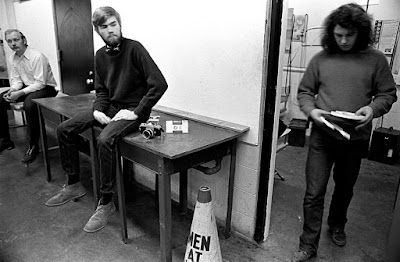I spent 30 years, on and off, as a locomotive engineer. Oddly enough it was not the career I envisioned for myself, but the seed for it was planted in my childhood. I wanted to be a lot of things when I grew up: a pilot, an architect, a cartoonist, or a TV producer. I tried a couple of them with moderate success, and ending up at the railroad was sort of an accident of both desperation and that little seed.
I was fascinated by trains as a kid. I had the ubiquitous Lionel train that went up around the bottom of the tree every Christmas. I was a free range child and often wandered to places where I could watch trains. Bailey Avenue was a short walk from my grandparent's house on Kelburn Street. There was a bridge over some train tracks where I could stand and watch the comings and goings of Pennsylvania Railroad freight trains. My grandparents took us to a park in Buffalo where an old steam locomotive was on display. In that innocent age you could climb on it to your heart's content.

When we moved to the suburb of Depew there were more railroads and more trains. Depew was once the home of the one of the New York Central's largest shops. The village was started by one Chauncy Depew, President of the New York Central Railroad. It was also the focal point of 4 railroad lines that bisected the town. I wandered and explored those tracks, and took out every book in the village library about trains that I could find. My favorite was "Trains, Tracks and Travel by T.W. Van Metre. and I don't think I ever let anyone else have a chance to read it I renewed it so many times.

In my senior year in High School I was a staff photographer on the yearbook. I used a camera and the photo lab for an project on the railroad landscape around town. It won first prize at the senior art show. Look Ma, I'm an artiste! I wanted to study architecture in college, my other great passion after seeing Louis Sullivan's Prudential Building in downtown Buffalo. My college choice ended up being determined by how far away I could get from my family, which was the Institute of Design at the Illinois Institute of Technology in Chicago. Not for architecture but for industrial design. Now I was in railroad heaven, and my Freshman photo project was documenting abandoned rail yards and train stations. Unfortunately that was NOT the assignment and my instructor was not pleased and my final grade reflected that. I continue to read books and magazines about trains, but it never occurs to me that I should work for the railroad.

Four years of college, three credit hour to graduation and I drop out. I work for a short time for animation company that ends up going out of business and that's where the desperation part of my story comes in. An old college friend and former roommate does work at the railroad. He tells me to show up at such and such a place on such and such a day at such and such a time and the railroad will hire me. Its 1974 and the seed has sprouted. The journey has begun.














